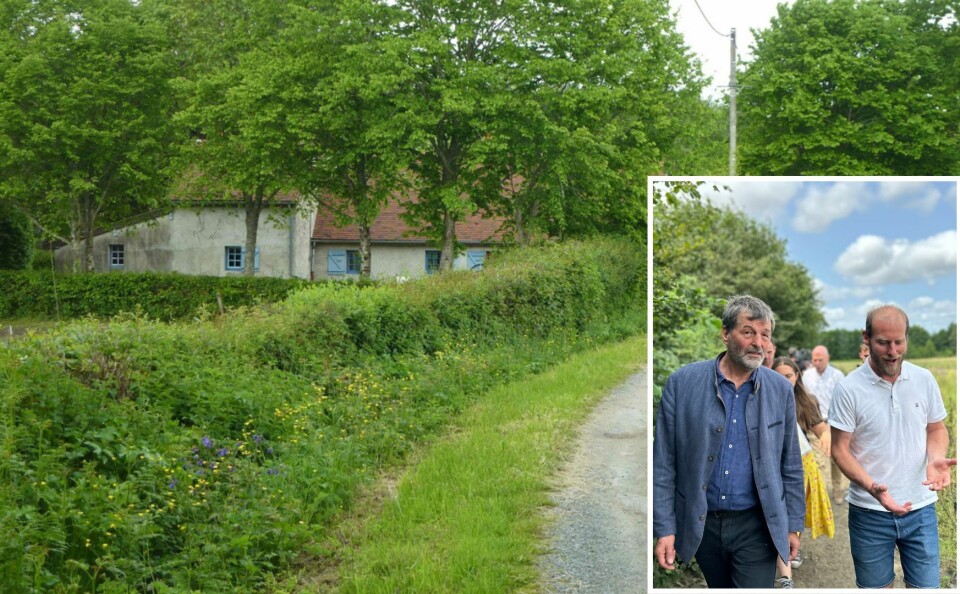-
New agreement to help with home renovations launches in Dordogne
The plan aims to connect citizens with local public renovation services to modernise old housing stock
-
White storks make strong return in France via nest ‘platforms’ and clipped wings
The Ligue pour la Protection des Oiseaux shares the conservation challenges in saving these birds from extinction
-
Why microphones are installed in hundreds of trees across France
Researchers have set up devices in more than 100 forests across the country
Moves to bring hedgerows back to the French countryside
The senator behind the regeneration campaign tells us how the €110m funding pot could work for farmers and the planet

A dwindling feature of the French countryside is set to make a comeback, thanks to a €110million scheme to regenerate hedgerows, but questions remain over its effectiveness for ecological transition.
Senator Daniel Salmon, of the ecology-green party, knows only too well the many advantages that hedgerows bring.
They include being a hugely important biodiversity reserve, as well as acting as a ‘linear forest’: greenery that is easier to defend than a traditional forest in the event of a wildfire.
Read more: What changes for the environment in France in 2024?
Pioneering pledge to invest €110million
In July, the Ille-et-Vilaine senator proposed a law to create a hedgerow preservation and replanting campaign.
In September, the government unveiled a pioneering pledge to invest €110million in replanting and maintaining the country’s agricultural and non-agricultural hedgerows, starting from this year.
The Pacte de Haies (Hedge Pledge) aims to increase hedges by 50,000km by 2030, prompting several questions from Mr Salmon.
“While €110million reflects a commitment from the government, we still don’t know what this budget will be used for,” he told The Connexion. “Which players will be funded and for what objectives?”
“Today we have about 450,000km of hedgerows in France, but we are destroying them at a rate of 23,000km a year.
“You just have to look at the state of our planet and all the challenges facing us.
“Even though we still have to fight to try and limit global warming, it is already here and we can already see the consequences. We have to try to find the best ways of mitigating and adapting to it.
“Hedged farmland is one of the elements that should enable us to do that.”
Read more: Green news France: €110m for hedgerows, marine protection for Nice
Hedges help redistribute water after heavy rain
Mr Salmon added: “For me, a hedge is the Swiss Army knife of ecological transition.
“Hedges store carbon, thereby reducing global warming, and they return moisture to the air, changing the climate.
“Climatic disturbance brings with it rainfall that will be rarer but often much more concentrated and violent, so one of the crucial issues for the future will be water management.
“We absolutely have to slow down the water cycle to let as much as possible infiltrate into the ground and recharge the water tables. Hedges are essential because they allow this to happen when it rains a lot.”
The senator said a network of well-maintained hedgerows, banks and ditches would also help moisture infiltrate the subsoil, where it could be redistributed during drier periods by trees.
“When you have hedges that stop water flowing, the little silty bits that are the most important for soil fertility get trapped in the fields. This is very important for preserving the quality of our soil.”
Hedges hide solar panels and wind turbines in farm fields
More hedgerows would help reverse the trend of the ‘open field’, something that could also encourage the adoption of renewable energies, he said.
“Hedgerows, especially along major roads, are the ones that have disappeared the most and they are the ones that absolutely have to be put back.
“If you have hedges along those roads, you can’t see the photovoltaic panels in farm fields. You can’t see the wind turbines, even if they are tall.
“When you get close enough, you can’t see methanisation plants. All of this contributes to the exceptionality of renewable energies.”
Read more: France lags behind on wind farm installations, official report warns
Managing hedgerows must be profitable for farmers
The Pacte de Haies also aims to develop the use of hedgerow by-products in the wood-energy sector, as well as for mulching, bedding and timber, potentially offering farmers new sources of income.
However, some are forced to cut back hedges after fibre optic cables were installed next to their land.
Residents in Orne have launched a petition calling for the lines to be buried.
When asked what farmers think about hedgerows, Mr Salmon replied: “Everywhere I go, farmers are aware of their disappearance. Now we’re up to 23,000km per year.
“We know that if we do not act, this trend will accelerate because we’re going to see more and more farms being built, and every time a farm is expanded it is the hedgerows that pay the price.
“There is an awareness that we need to save them. It’s just that many French farmers are caught between a rock and a hard place, in a perpetual race for yields and, above all, subsidies.
“The hedgerow has to be a profitable space for the farmer.”
Plant local species adapted to soil
Returning to the latest investment, he said: “A significant proportion of this funding should be devoted to the sustainable management of hedgerows, to achieve the restoration and good ecological status of existing hedges.”
He also called for new hedgerows to be planted with local species adapted to the soil.
“Under these conditions, the €110million will have an impact on the preservation and development of hedgerows for climate and biodiversity.”
Related articles
€1bn plan announced to safeguard under-threat biodiversity in France
Will €3.5billion pledge be enough to secure future of French farming?
Gardeners in France told to stop cutting hedges in bird nesting season
























